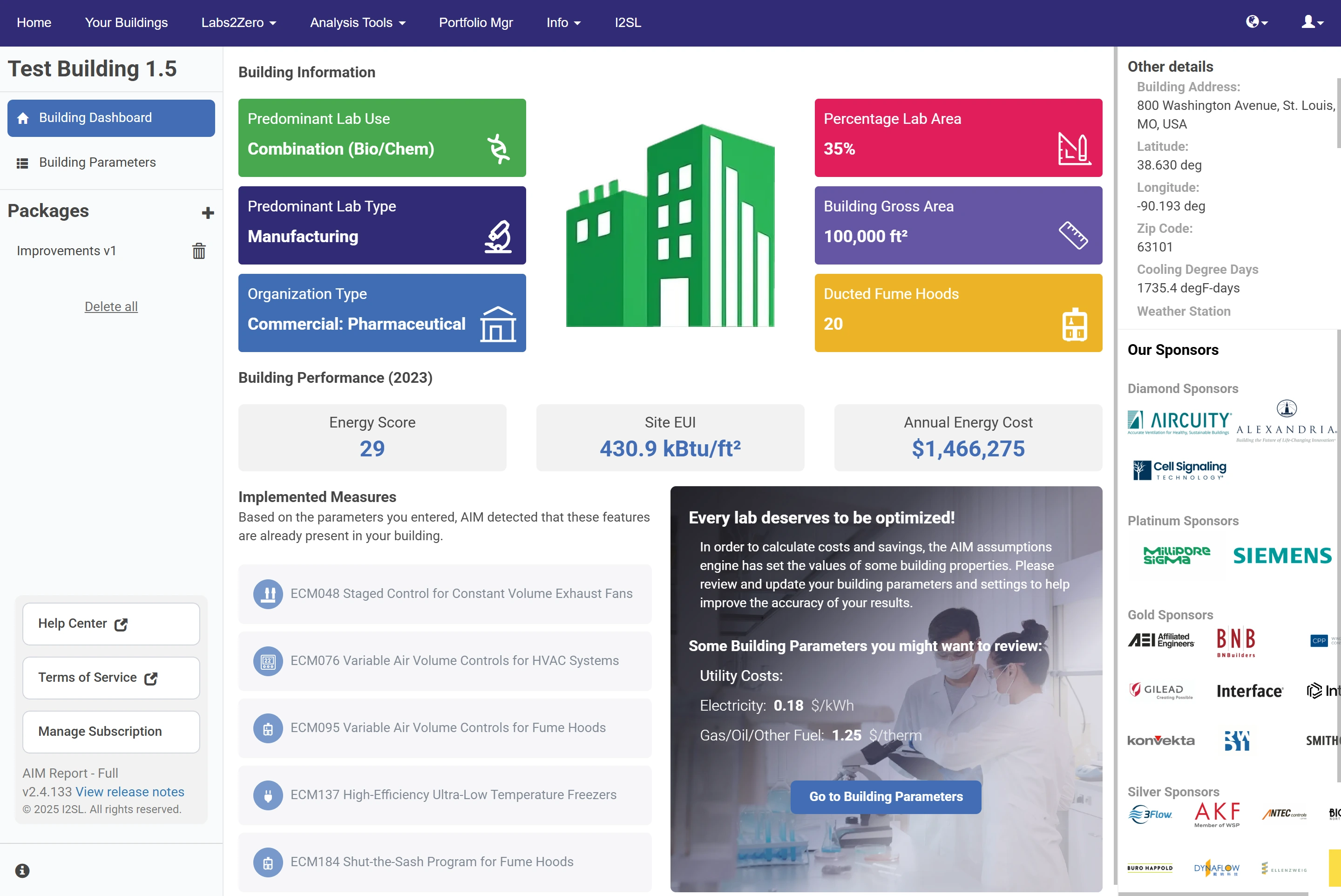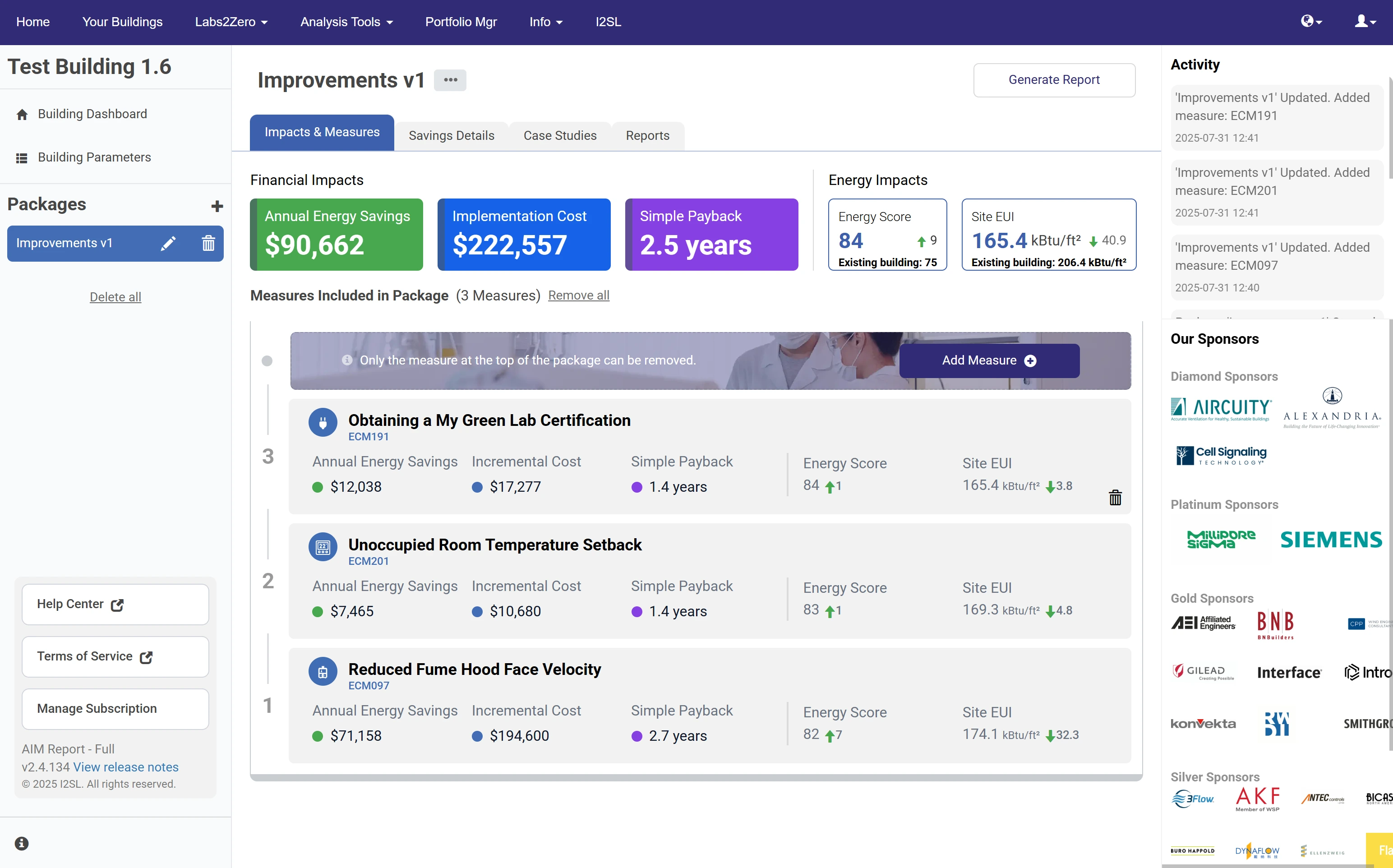Notice: Scheduled system maintenance will occur on Thursday, Sep 11th from 9 AM to 10 AM PT.
Get Started on Your Decarbonization Journey
AIM is designed to help kick-start the conversation about potential energy and emissions reductions for lab buildings. It can be used by facilities teams, engineering consultants, utility companies, product manufacturers, and others. The results of the AIM Report can stand alone as a high-level initial scoping assessment for savings opportunities, or can be incorporated in other energy studies or assessment programs.
Enter Your Building Data in the LBT
If your building is already in the LBT, you can start seeing AIM results with just a few mouse clicks. AIM uses your LBT data record and makes intelligent assumptions for other building parameters so you can start seeing results right away.
Build a Package of Measures Customized to Your Facility
AIM includes a library of lab-specific measures, covering HVAC systems, fume hoods, control systems, and occupant engagement programs. Savings and cost estimates are fully customized to your building and take all interactive effects into account.
Export a PDF Report to Share
With a single click, generate a PDF report containing all the results and details on your selected package of measures. The report also includes case studies automatically selected for their relevance to your building and selected measures.
Types of Facilities Served by AIM
The AIM Report can be used on a wide range of lab building types, including basic R&D research, product development, testing facilities, and teaching labs, with coverage of academic, commercial, and government organizations. AIM includes measures and calculations applicable to chemistry, biology, physical sciences, and engineering lab facilities.


Development of the AIM Report
The AIM Report tool was created by I2SL and its development partners, including SmithGroup and Buro Happold. Development was supported by 30 Labs2Zero sponsor organizations and was overseen by the Labs2Zero Leadership Council. Technical guidance was provided by four Technical Advisory Councils (TACs) composed of subject matter experts from across the laboratory lab owner, operator, engineering, building, and design communities.
